KOLLEKTIVNYE DEYSTVIYA (COLLECTIVE ACTIONS). THE DESCRIPTIONS OF ALL THE ACTIONS, Photo and Video
JOURNEYS TO THE COUNTRYSIDE. VOLUME THREE

32. THE SHOT
One of the action’s organizers (G. Kizewalter) accompanied the group of guests on its way from Moscow to the scene at Kievogorskoe field. The group had to go by train first and then by bus. The field is situated in a 15-minutes-walk distance from the bus stop. After leaving the bus, G. Kizewalter turned on a tape recorder and the viewers’ path from the bus stop to the field was accompanied by a soundtrack consisting of sounds of a whistle (mouthpiece of a end-blown flute) and a hand-made trumpet (manufactured from a stem of a tubular plant) that produced deep, low-pitched sound. The acoustic canvas of the soundtrack reminded of roll-calling of steamship buzzes and whistling of a train. The viewers were taken to the field, to a purple curtain wavering in the wind that divided the audience’s position from the ploughed area of the field where the action was to take place. Between the curtain and the plough land there was a narrow strip covered with low grass on which Kizewalter placed a turned on recorder. The soundtrack on the other side of the cassette consisted of 45-minutes-long recording of electric bells ringing at different intervals. In the end of the soundtrack there was a five-minutes-long recording of loud singing of several birds.
After placing the turned off recorder in front of the audience (behind the curtain), Kizewalter went to the ploughed field and positioned himself next to Letov who was lying in a pit and invisible to the audience, on the audience’s right and 60 meters deep into the forest. Then Monastyrski, who was waiting among the viewers, entered the field and planted 11 plastic tubes vertically (each 1,5 meters high) and 5 red sacks filled with grains and fixed on tops of long poles. One of the sacks was placed in the distant corner of the field. After Monastyrski’s taking position next to Kizewalter and Letov in the pit, Panitkov entered the field and, sticking pieces of flexible cord into the tops of tubes planted by Monastyrski, began bending pieces of cord to form figures of human faces, animals, birds etc. After finishing the last figure by the distant red sack, Panitkov projected a wooden arrow with point made of silver foil, with the help of a bowstring attached to his fingers, and then left the field. The shot served as signal for Monastyrski to start cutting the edges of the sacks (at this point grain started to pour out), and at the same time pulling cords from the tubes, thus destroying figures built by Panitkov and transforming them into whip-like objects, their ends touching the ground. Meanwhile, the sacks, relieved of grain, became red banners with Maltese crosses wavering in the wind.
After finishing this phase of the performance, Monastyrski approached a pit (dug beforehand), invisible to the audience and located on its right the same distance away from it as the pit in which Letov was lying (he had taken the position prior to the audience’s arrival). Thus, both of these pits served as boundary marks on the field where the described action was taking place. Monastyrski blew a whistle and waited for Letov’s response signal which followed 15 seconds later. It is important that the audience was unaware of Letov’s presence, as the response signal was camouflaged by Kizewalter standing next to Letov’s pit: he pretended to blow a oboe, while the real sound was produced by Letov. After the response signal Monastyrski lay down to the pit, thus disappearing from the audience’s sight.
Then Kizewalter collected the flags and tubes with cords, approached the curtain, dismantled it along with the fixing poles and turned on the tape recorder to play back the sound of ringing electric bells.
After turning on the recording, the viewers were offered envelopes with photographs of the action inside (that served as a signal for the action’s ending); at the same time acoustic roll-call began on the field between Letov (various wind instruments) and Monastyrski (mouthpiece of a flute). Therefore, after the visual part of the action came to an end, a musical piece titled "The Acoustic Triangle" was being performed in the empty field. The two apices of this triangle were Letov and Monastyrski, lying in the pits on the audience’s left and right and invisible to it, and the third was the tape recorder (facing the audience on the field’s verge) playing back the recording of ringing electrical bells.
The musical piece ended with a five-minutes-long tape recorder solo playing the singing of the birds.
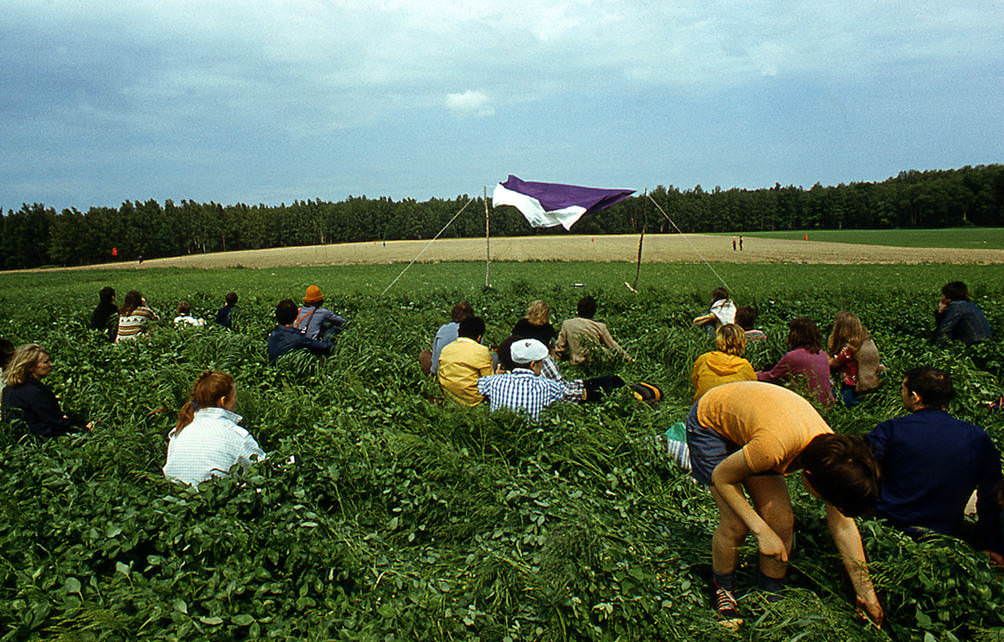
Moscow region, Savyolovskaya railway line, field near the village of Kyevy Gorky
2nd of June, 1984
N. Panitkov, A. Monastyrski, S. Letov, G. Kizewalter, I. Makarevich, E. Elagina, E. R., N. S.
Viewers:
V. Nekrasov, I. Bakstein, V. Sorokin, I. Nakhova, Yu. Leiderman, L. Skripkina, O. Petrenko,T. Didenko, E. Romanova, N. Stakheeva, A. Zhigalov, N. Abalakova, S. Gundlakh, L. Zvezdochetova, Margareta Tillberg + 13-16 others
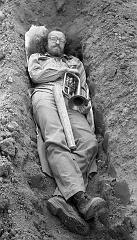 |
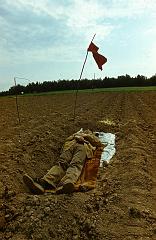 |
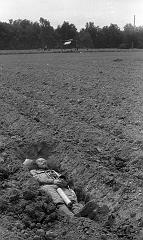 |
 |
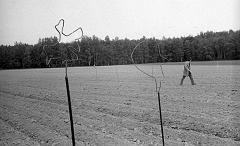 |
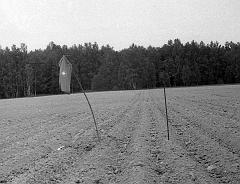 |
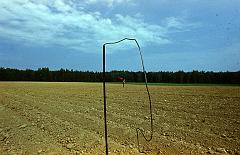 |
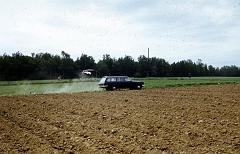 |
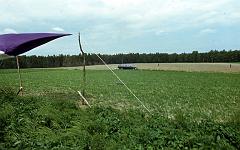 |
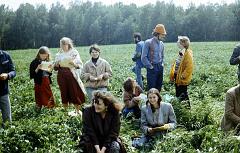 |
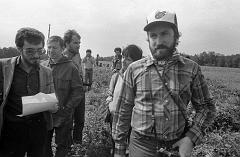 |
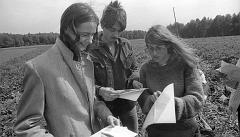 |
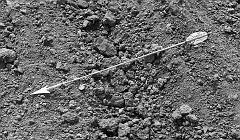 |